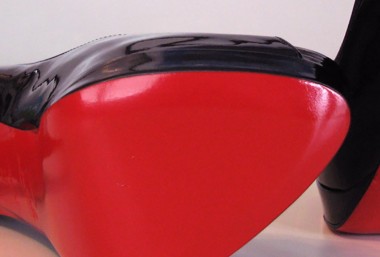What you can register as a trade mark is not limited to words or graphics. These types of trade marks are considered 'traditional'. Other 'non traditional' trade marks can also be registered if they meet certain criteria.
It is possible to register smells, shapes, slogans, animation and colours as trade marks for example. The limits of what can be registered as a non traditional trade mark are a moving platform. It will be interesting to see what form a trade mark has in the next five years.
Colour me...
Colours as trade marks have always appealed to some businesses, especially the retail sector. Retailers, and other businesses, are able to use a single colour to associate themselves in the minds of consumers with their products. New Zealand examples include the colour purple as used by Cadbury on its chocolate confectionery, the colour red as used by The Warehouse for its retail stores and the colour yellow as used by the Yellow Pages for its telephone directories.
Achieving registration of a single colour as a trade mark can be difficult. It usually requires the filing of substantial amounts of evidence to show that the particular colour has acquired a 'secondary meaning' as a distinctive symbol that identifies the products manufactured and sold under that colour with a particular source of those goods. This is by no means easy to prove. But if a valid trade mark registration is obtained for a colour, it can prove to be a strong weapon in the fight against imitators.
Seeing red
A recent US case involving the colour red shows how this works. The case of Louboutin v. Yves Saint Laurent has been one of high stakes in high heels.
For many years Louboutin has painted the whole of the sole of the fabulously ornate shoes that he designs in a glossy vivid red. He introduced his signature footwear to the fashion market in 1992. Since then his shoes have become highly sought after by celebrities and fashion icons.
As a result of Louboutin's marketing efforts, a 'flash of a red sole' is considered recognisable to those in the know as Louboutin's handiwork.
In 2008, the US trade marks office granted a registration to Louboutin. Specifically the registration for the Louboutin trade mark states "the color(s) red is/are claimed as a feature of the mark. The mark consists of a lacquered red sole on footwear".
Not surprisingly when a competitor, Yves Saint Laurent, designed and introduced in 2011 a red shoe having a red outsole and red upper into its range, Louboutin objected.
The District Court refused Louboutin's request for a preliminary injunction, reasoning that a single colour could never serve as a trade mark for fashion items because such trade marks were inherently functional. The judge also questioned the validity of Louboutin's trade mark. Notwithstanding Louboutin's registration, and despite its efforts to create secondary meaning in the brand, and the reputation associated with its red sole shoes, colour was functional in the fashion industry because "there is something unique about the fashion world that militates against extending trade mark protection to a single colour".
Louboutin's appeal
On appeal, the Second Circuit discerned that there was no basis for not extending trade mark protection to single colours in the fashion industry. The bright red soles of Louboutin's high-heeled shoes are so distinctive they deserve trade mark protection, the court ruled. "It is the contrast between the sole and the upper that causes the sole to 'pop' and to distinguish its creator".
In reversing the decision of the District Court, the Second Circuit found Louboutin's trade mark valid but limited the trade mark registration to designs in which such outsoles contrasted in colour with an adjoining upper. The limitation came about because the evidence presented established that Louboutin's use of the red sole was almost exclusively on shoes with a contrasting upper. With this limitation, the result is that Yves Saint Laurent (and others) can sell monochrome red shoes (covering the insole, outsole, heel and upper), but not shoes with a red sole and a different colour upper.
The decision was in effect a win-win for both parties. By limiting the Louboutin registration to only the red sole of the shoe the Second Circuit provided itself with an easy way out from having to deal with the question about the functionality of colour as a trade mark. Yves Saint Laurent's shoes did not use a contrasting sole, which was what Louboutin was entitled to claim rights in under its limited trade mark.
Registering your colour
This decision supports the premise that single colours can function as a way of distinguishing one businesses products from another. Furthermore it confirms that a single colour can be registered as a trade mark. If you use colour as a trade mark in your business, think seriously about whether you should register it but recognise that you may only be able to get (and maintain) rights in that colour for the actual way you use it.
An edited version of this article was published in NZRetail magazine, issue 712.
